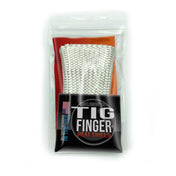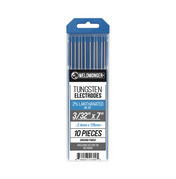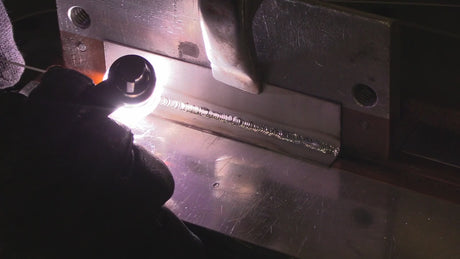Information on our new TIG Arsenal kit shown in this video, is right here.
Passing a d17 test starts with cleaning the metal the right way.
I suggest starting with an acetone wipe to remove any oils, adhesives, shop dust, etc. so that you wont smear them into the metal when you use an abrasive wheel.
Next, file the sheared edge to be welded with a clean file that is dedicated to stainless or whatever metal you are welding.
Some metals will also require a light sanding about 1/4" (6mm) from the edge...but again use a dedicated sanding disc around 120-240 grit.
I strongly discourage using scotch brite wheels to clean test plates since some of them contain polishing oils that cause porosity.
One final wipe with acetone before putting the pieces in the fixture.
Make sure the fixture is clean and wipe down with acetone if not.
Once the test pieces are in the fixture, do NOT spray or wipe with acetone as this will only flush contaminants into the joint.
.063" (1.6mm) stainless does not really require any gap in order to fully penetrate but I sometimes use a slight gap to help me see the joint better.
If i gap the pieces .040" (1.mm) they are more half that by the time I get a few tack welds so the gap is minimal while welding.
I make tack welds on the ends with just a few extra dabs of filler metal to prevent melting away.
Even though the AWS D17.1 specification allows for end defects, i think test pieces should be visually acceptable end to end.
Once the test joint is tacked up, its time to weld.
Stainless steels generally require around 2/3 the amperage as carbon steels for a butt joint so 46 amps was enough to fully penetrate .063" 304L stainless.
- Try to keep the hot tip of filler rod shielded in the argon.
- keep a tight arc length
- make sure fixture purge gas flow is enough to shield but not too high as to disturb the torch gas.
Weld Details
- .063" 304L stainless
- DCEN
- 46 amps
- 3/32" 2% lanthanated tungsten
- .045" ER308L filler rod
- Jazzy 10 cup with 25 cfh argon
- 10-15 cfh purge flow rate






